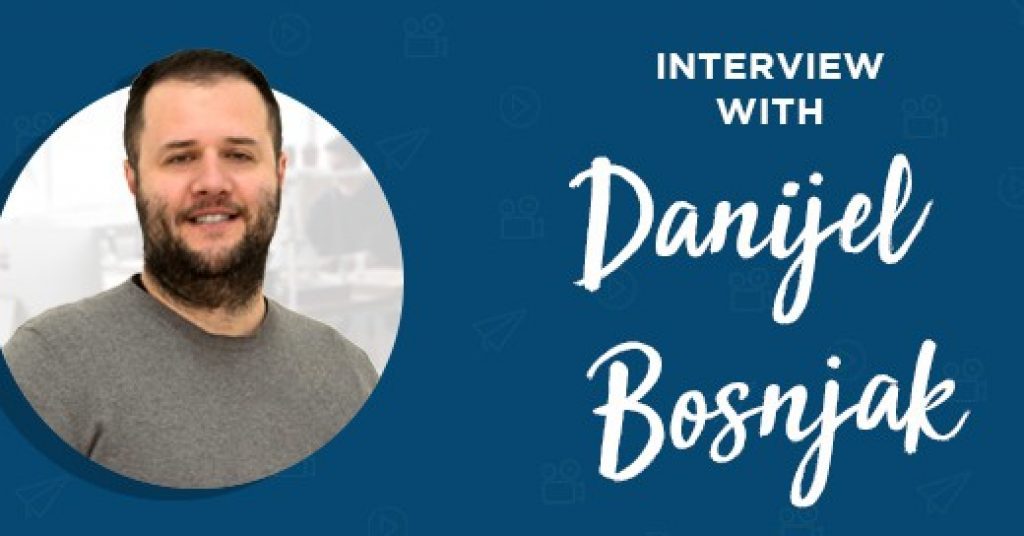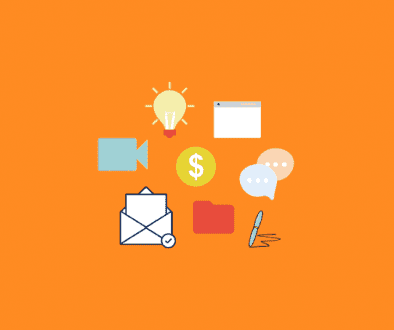UX design helps you better connect with your audience
Danijel joined the Covideo family as an UX Designer in January 2018. He is a multidisciplinary designer, focusing on UX/UI design, brand strategy and crafting usable and beautiful digital products. Over the past 15 years, he has contributed to many successful projects, ranging from websites, web applications to mobile apps, both as a freelancer and in-house designer.
COVIDEO: You had worked as a designer for 15 years before you joined Covideo. What is it about it that attracts you most?
I like helping people use digital products. I enjoy solving multi-faceted UX/UI design problems and balancing the tipping point between User goals and Business goals.
COVIDEO: How would you describe UX design? Why does it matter?
User Experience Design is how a person feels when interacting with a digital product. Is the product intuitive, a joy and easy to use, can a person figure it out quickly? Or is it all the opposite? If you remember recent Hawaii’s false ballistic missile alert, the operators were blamed for these failures. “Human error” was the immediate analysis. But, the committee discovered that the plant’s control rooms were so poorly designed that error was inevitable. So, design was at fault, not the operators. Clearly, good User Experience Design matters a lot, especially in these types of situations.
COVIDEO: What do you think are the best things you have done in your projects? Are there any considerate or special designs?
Most of my work is under NDA, so I can’t disclose any details. However, there is one large-scale project I worked on, for a client in the healthcare space. It involved an integrated suite of digital products including a website, mobile application and a web application, with both client facing and back office features. There were multiple types of users on both sides of the system. The challenge was to satisfy all these users needs, without compromising the business goals and quality of the user experience. That was a lot of fun, and I learned a lot working on that project.
COVIDEO: What are some of the biggest challenges you face as a UX designer?
The biggest challenge all UX designers face is being able to quickly establish good communication about the design process with business stakeholders. Moreover, you have to guide them towards a usable and mature digital solution, while still advocating the voice of the customer.
COVIDEO: What does the term ‘design-thinking’ mean to you?
I love Design Thinking because it is a practical, hands-on methodology for tackling complex problems and framing them in human-centric ways.
COVIDEO: How would you decide which features to add to your product?
I like to use a combination of asking the customers and the internal team brainstorming. This helps me to decide which features will make it into the product’s final version.
COVIDEO: What do you think of interaction design and user experience? What’re the differences between the two?
Interaction Design is a subset of the User Experience. Interaction Design is specifically a discipline which examines the interaction (via an interface) between a system and its user. User Experience Design focuses on the overall experience between a user and a product. It is not just concerned with the interactive elements but also the way that certain elements look, feel or contrive to deliver certain outputs and outcomes.
COVIDEO: What do you think is the difference between the Web and the mobile (or any of the platforms you’ve done)?
The obvious difference is the screen real estate. The mobile user experience, however, demands a very different approach. On the desktop computer or a laptop, you have to use additional hardware input devices (mouse, keyboard or a touchpad) to interact with the digital product. Mobile devices don’t need any extra hardware, because they have capacitive touch-screens and you can use your fingers to interact with the product, which makes the experience more tactile and direct. This is key. The experience is completely different, and this is something to keep in mind when working on mobile digital products.
COVIDEO: What do you think are the advantages of Covideo’s product? How do you see it improving in the future?
I think the biggest advantage of Covideo is the amazing customer support and the great company culture. The product is easy to use and has a lot of useful features like video metrics, reports, graphics templates and exit links. It’s cheaper than ever to get a phone or a tablet with a video camera embedded. Cloud-based, unlimited storage facilities, blazing-fast Wi-Fi and 4G signals are now a given. Covideo has a lot of brand authority and a solid user base, and online video is the future. With the existing video email product experience and background, I think Covideo is perfectly positioned to leverage and act upon its know-how and venture into other areas like video content marketing, advertising and analytics, both in B2B and B2C arenas.
COVIDEO: Where do you get inspiration from? Who in the industry do you follow and read?
I am a member of a few online UX communities, most notably the Give Good UX Company of Friends Facebook group, owned by my dear friend and mentor Joe Natoli. If I had to pick one person who has truly inspired me and helped shape my thinking and my career in UX design, it would be Joe. His book “Think First” is one of the best books on the topic of UX design I have read. I can honestly recommend it to anyone interested in this field. I follow some other UX thinkers as well, like Don Norman and Jakob Nielsen of Nielsen Norman Group, among others.
COVIDEO: What are the main current trends in UX design?
There is a hot race going on in the digital product design software arena. Adobe Photoshop used to dominate the old web design industry for a long time. However, over time the design roles have fragmented into more specific skill sets. Therefore, there was a need to develop specific workflows and tooling, to make it easier for product design teams to collaborate and work efficiently on their products. The designer/developer handoff is still a huge bottleneck. Many companies are trying to solve this issue by coming up with a tool that can seamlessly translate designs into code. There are a lot of great initiatives, but I feel we are still a long way from having a true all-in-one, design-to-code tool. Also, many designers have taken an interest in new and emerging fields and technologies, like VR/AR, voice interfaces, chatbots. Some are more focused on motion design and prototyping. Others have even broadened their scope to include business design and product strategy.
COVIDEO: When talking about the future, what would you say UX design will look like?
I think in the very near future the computer, tablet and smartphone screens will still be the dominant touchpoints we use to interact with digital products. The way we build digital products and thus practice UX design will not change dramatically. With the advent of new technologies (Machine Learning, AI, Virtual Reality, Voice interfaces and IOT), we will expand and supplement the overall user experience. It will definitely be interesting to work on products that leverage those technologies as well.
Covideo provides video email software that helps businesses and individuals communicate more effectively, build relationships faster and reinforce their brands with easy-to-make personalized videos.





